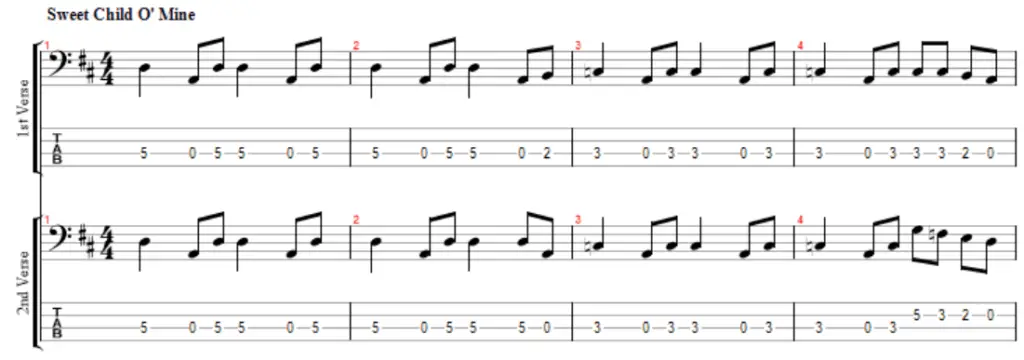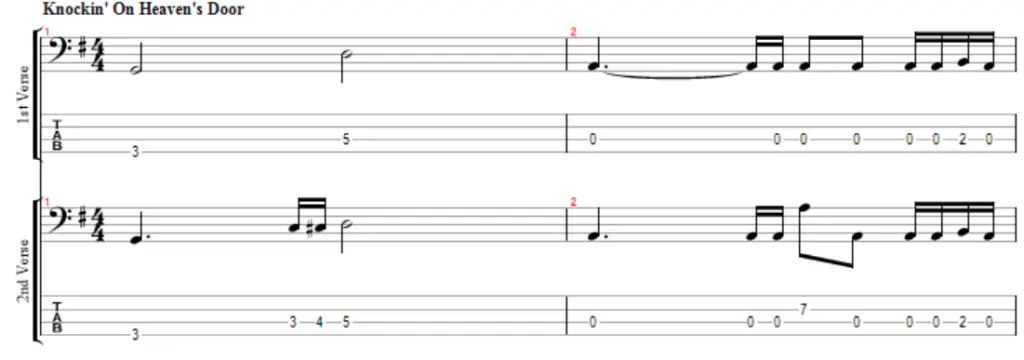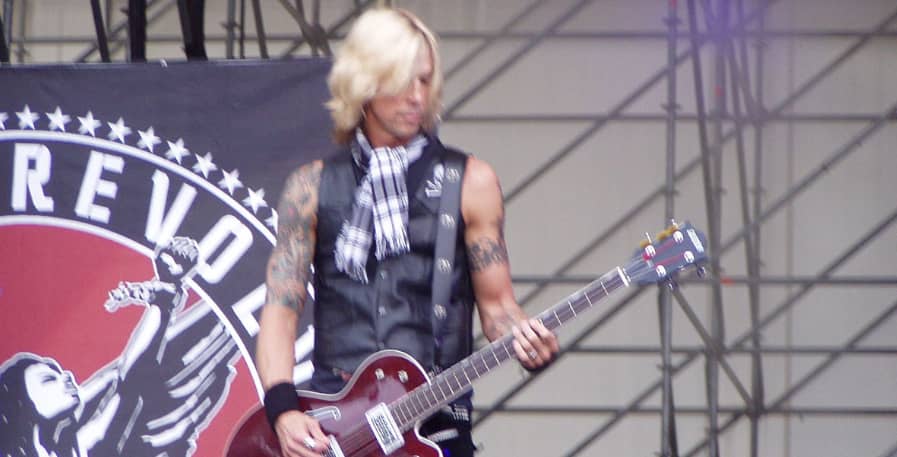This post contains affiliate links
Whether in Guns N` Roses or Velvet Revolver, Duff McKagan’s bass tone creates a punchy backdrop that makes the whole band shine.
While some rock bassists like to keep things simple, Duff tends to mix things up. This is reflected in both his bright chorus-driven tone and his creative use of variations in his basslines.
So how do you get Duff McKagan’s bass tone? It`s not a complicated puzzle, but it is important that you fit the pieces together right. That`s why I`ve written this easy-to-use guide for you to sound just like Duff.
I will show you what bass guitars he plays, and how he has set these up. Then, I`ll show you what strings, picks, and gear he uses. Lastly, we will take a look at what makes his playstyle unique, so that you can emulate his techniques.
What type of bass does Duff McKagan play?
At the early stages of his career, McKagan played a Fender Jazz Special. In later years he has gravitated towards playing his signature Fender Precision Bass. Duff has also shown a preference for the Fender Aerodyne and Musicman Stingray.
On Guns N` Roses’ iconic debut album “Appetite for Destruction”, Duff played a Fender Jazz Bass Special. This is a PJ bass, with a precision bass body and jazz bass neck, with both jazz and precision pickups.
He switched the bridge pickup to a Seymour Duncan and has shown a preference for these pickups since. He also used this bass in the following years and on “Use Your Illusion”, where he also used a custom JBS.
When playing with Velvet Revolver following the breakup of Guns N` Roses in 1997, Duff continued to use the Fender Jazz Special. Here he has also used a Musicman Stingray and occasionally a Fender Aerodyne.
However, when Guns N`Roses reunited in 2016, Duff played a Fender Precision Bass. While Jazz and Precision basses sound different, he retained his iconic tone despite the switch.
Duff has continued to play the precision bass, which is a signature Duff McKagan model by Fender. This bass emulates his iconic jazz special bass sound from his early days well, despite being a precision bass.
Below is a clip of Duff playing his Signature 4-string. He also goes on to explain why he prefers the P bass, how he gets his tone, and his philosophy on being a bass player:
Thus, the best basses for emulating McKagan’s tone are the PJ Jazz Bass Special or his signature Precision bass.
While the precision bass is a newer addition, it`s based on Duff`s classic tone and combines old and new into a more developed sound.
What pick did Duff McKagan use?
Duff McKagan has used .73 guitar picks as his bass pick of choice for most of his career. He mainly uses Dunlop Tortex picks and has shown a preference for playing with yellow picks.
While Duff occasionally plays with his fingers, his signature tone comes from playing with a pick.
McKagan uses a thinner pick than most bassists. While bass picks differ from guitar picks in thickness, his .73 pick is on the thinner side, even for a guitar pick.
“My Dunlop Tortex, yellow not black, .73 guitar picks. I could in fact ‘live’ without them, but I’d be grumpy as f***”
Duff McKagan on his pick choice – Interview with Dunlop
A thin pick can produce a slightly hollower sound than a thick one, but it can also sound brighter and clearer.
However, Duff picks with a good bit of force and aggression when he plays. Thus, Duff’s tone sounds fuller than most bassists when combining his effects and aggressive picking, despite the thickness of his picks.
As for playability, The Dunlop Tortex .73 allows for some fast and effortless picking. It will meet some resistance from the heavier strings, meaning that the pick will bend slightly before the string is picked.
This will however not be too noticeable if you have a controlled picking technique where you pick the strings with just the tip of the pick. Thus, for Duff who picks his strings relatively hard and plays moderately fast basslines from time to time, his unconventional pick choice makes a lot of sense.

What AMP does Duff McKagan use?
In the earlier days of his career, Duff McKagan used Galien-Krueger amplifiers with both Guns N` Roses and Velvet Revolver. Later, he started to use Fender AMPs, utilizing both a 300w Super Bassman and a Fender Bassman 6×10.
Galien-Krueger amps have been a staple in most of Duff’s career. He first used an 800rb, and later a 2000rb amplifier.
GK`s have a punchy, and tight tone quality to them. Furthermore, Galien-Krueger amps differ from many other brands in their tone and character. As these amps shaped what McKagan`s early tone sounded like, it can be hard to replicate it accurately by using other brands of amps.
However, Duff himself switched from GK to Fender later on. While he liked the sound of Galien Krueger amps, he found that their tone was inconsistent during live shows.
“I played Gallien-Krueger bass amps for years. They’re great amps and I’ve got nothing bad to say about the company but they were inconsistent.”
Duff McKagan on his switch from GK to Fender AMPs – Interview with Seymour Duncan
After switching to Fender, McKagan used a 300w Super Bassman, and later a Bassman 6×10. This altered his overall tone somewhat but gave him the consistency he needed when touring.
If you are looking to recreate Duff`s tone though, Gallien-Krueger amps are your best bet. They defined his tone in his most iconic years, and the inconsistency of the amps will not be noticeable for bassists who are not touring big venues.
What strings does Duff McKagan use?
For the majority of his career, Duff McKagan has used Rotosound 66 swing bass strings. These are stainless steel roundwond strings with gauges of .105-.080-.065-.045.
Duff was already using Rotosound 66 swing strings on Appetite for Destruction in 1987. These are the strings that shaped the sound of Paradise City, Welcome To The Jungle, and Sweet Child O`Mine, among many other classics.
Duff has also stuck to Rotosound Swing strings ever since then. Thus, while his overall tone will differ depending on the song, these strings are always the backbone of his clear and bright tone.
The punchy rock sound with bright highs and crispy mids have made these strings a popular choice for many rock bassists. Among others, they have been used by John Entwistle of “The Who” and Chris Squire of “Yes” to help them stand out and sound clear in mixes.
In McKagan’s case, the brightness of the Rotosound 66 strings fits perfectly with his overall tone. Combined with his use of chorus effects, these strings allow him to take up a lot of space on songs, without ever sounding intrusive.
This brightness relies on the strings being relatively fresh though. This is because when strings start to get worn out, the brightness starts to fade from them. Thus, to maintain a tone that resembles McKagan`s, you will need to rejuvenate and reuse the strings or buy a new set regularly.

Chorus Pedal
One of the most defining characteristics of McKagan`s sound is his use of chorus pedals. A chorus pedal makes a bass sound shimmering while taking up more space. It can also create the illusion that a bassline is played by multiple basses at the same time.
When overdone, too much chorus can quickly become overwhelming and noisy. With the right amount though, a chorus pedal can make a band sound more fleshed out and add a pleasant glimmering tone to the low-end.
This chorus effect generally blends into the overall mix in Guns N` Roses, and can thus be hard to pick out at times. It is easier to notice during high notes, such as the bass solo at the beginning of Sweet Child O` Mine from 0:15 to 0:30.
While Duff has experimented with various chorus pedals, such as the Yamaha SPX90, he eventually gravitated towards the MXR M83. Thus, while most chorus pedals will do the trick, this is the one I recommend if you are looking to get as close to Duff`s sound as possible.
“I’ve used all sorts; MXR, Ibanez, and a SPX90. Lately I have been using the MXR Bass Chorus.
Duff McKagan on chorus pedals- Interview with Dunlop
As for the settings on the pedal, dial them like this:
- Intensity: 5
- Rate: 3
- Width: 6
Depending on your bass, you might need to adjust these settings slightly. However, this will give you the best starting point to get as close as possible to Duff`s tone on most bass guitars.
If you use are using a different pedal than the M83, I recommend using the above settings as a starting point. Depending on your bass and the pedal, you might however need to do some experimenting.
Settings
McKagan`s tone is all about being bright and punchy. Thus, his EQ and pickup settings naturally reflect this. Here is a rough estimate for how you want to set your settings to recreate Duff`s tone:
- Treble: 7
- Mids: 7
- Lows: 6
- Bridge pickup: 80%
- Neck pickup: 40%
Turning the bridge pickup high up makes for a clear and bright tone. Keeping the neck pickup at around 40% retains some fullness to the tone while the emphasis is on the brightness.
A good bit of treble and mid frequencies make the tone clearer and more noticeable in a mix. Duff has a good bit of low-end in his EQ. This ensures that there is enough growl in his tone to retain a punchy overall sound.
These are the settings that got me the closest to McKagan`s tone. Thus, I recommend using them as a starting point. Depending on your bass and gear you might need to tweak these slightly.
How do you play bass like Duff McKagan?
On the surface, McKagan’s playstyle can seem fairly straightforward. However, there are many iconic aspects to his style that make him differ from your run-of-the-mill rock bassist.
Among other things, he has shown that he is able to play great bass solos. Not only that, but he makes his playstyle stand out for all of the following reasons:
Ghost notes
While it can be hard to pick out in a mix, Duff likes to use a lot of ghost notes in his playing.
This adds a good bit of dynamic rhythm and groove to his playing. Despite being common in Rock, McKagan rarely plays straight 8th note grooves. By adding rhythmic variation through ghost notes instead, he manages to stay true to the genre without sounding overly generic.
Aggressive picking
Duff plucks the strings on his bass hard. This adds punch and aggression to this playing and helps his basslines drive songs forward.
With the use of chorus and a thin pick, this makes for a really unique tone, with a nice balance of beautiful and heavy.
Note that if you are not used to picking strings hard, it can be difficult to play this way without straining your hand. I recommend slowly working on picking strings harder and harder, without ever tensing up your wrist or arm.
Ending on a high note
Another staple of McKagan’s style is that he likes to end on a high note, literally.
Guns N`Roses commonly lead into heavy riffs with a long sustained note. When this note is played high up on the bass, the following riff will generally sound even heavier as a result. This is typically done at the end of choruses, for example at 2:22 in Paradise City.
Variation in verses
Duff is known for adding small variations to his basslines in the first and second verses. While this can seem like just an extra detail, these variations often add a lot of dynamics and flavor to songs. This holds especially true in Rock` n Roll, where basslines are almost always repeated in subsequent verses.
You can notice this trend in a lot of Guns N`Roses songs. For example, here is the start of the first and second verses of Sweet Child O` Mine:

Duff also does this on ballads and slower songs as well. As an example, here is the start of the first and second verses of Knockin’ On Heavens Door.

Conclusion
As you can see, Duff McKagan`s bass tone is a product of multiple elements coming together. His playstyle and tone build upon the classic elements that make up a great rock tone and expand on them in several creative ways.
The backbone of this tone is a chorus pedal, such as the MXR M83 or the Yamaha SPX90. There`s also a fresh set of Rotosound swing strings to get a bright and clear tone that fills the room. The bridge pickup and mid and high frequencies are also turned up to make the sound pop and shimmer.
The strings are picked hard with a thin guitar pick, preferably through a Gallien-Krueger amplifier. If the bass isn`t played through a GK, it`s being played through a Fender as a great second choice.
Most basses will get close to an authentic McKagan bass tone this way. You will however get the closest with a Fender Jazz Special or with Duff’s own signature Fender P bass. Any Fender PJ basses will do the trick as well, and if you can`t get your hands on Duff`s signature bass, a good old Fender P bass will also work.
Attempting to emulate Duff`s aggressive picking technique incorrectly could hurt your hand and wrist. To avoid this, continue by reading how to avoid wrist pain when playing bass.

